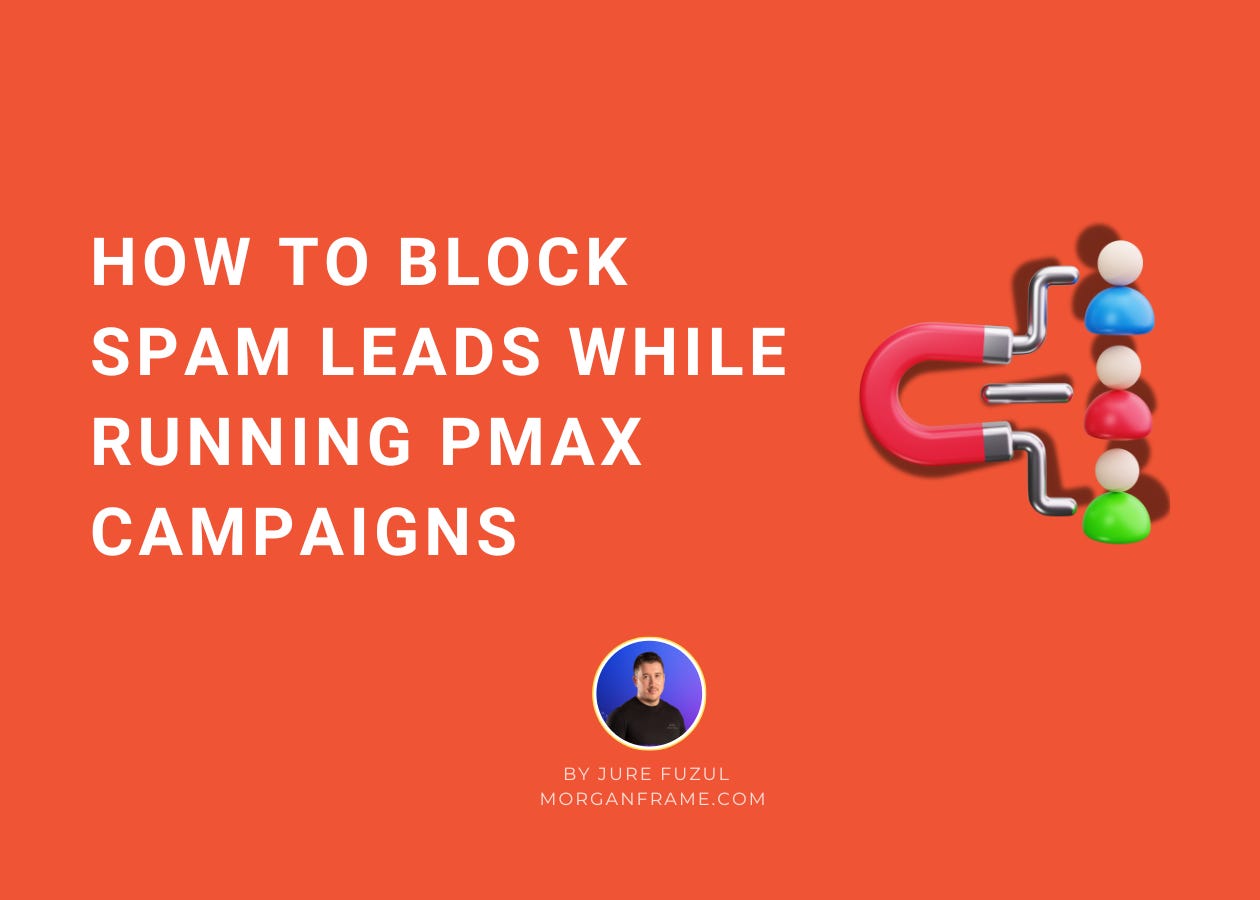How to Block Spam Leads in Performance Max Lead Generation Campaigns
Spammy leads in leadgen campaigns are big issue for most service based business who wants to get more clients. Here is how we usually solve while running Google Ads for service based businesses.
Improve Lead Quality and Campaign Performanced
If you’re running Performance Max campaigns for lead generation for service based businesses, you might have noticed an influx of low-quality, spam leads. Whether you’re focused on form fills or phone call leads, spam can skew your data and affect your performance metrics. This article is for digital marketers, business owners, or anyone managing online lead generation. You’ll learn a step-by-step method to eliminate spam traffic and ensure that your campaigns deliver high-quality leads. By the end of this guide, you’ll have a clear process, common pitfalls to avoid, and a solid strategy to make your campaigns more efficient.
Step 1: Create a Dedicated Landing Page for Performance Max Campaigns
Why It Matters:
Using one landing page for all campaigns can create confusion in tracking quality traffic. Creating a dedicated landing page for your Performance Max campaign gives you complete control and clear data about the traffic source.
Tip: Use a Unique URL
Detail: Even if the content on the page is similar to your other campaigns, make sure it’s hosted on a different URL.
Insight: This separation lets you identify Performance Max traffic precisely, making it easier to analyze data and troubleshoot lead quality issues.
Common Mistake:
Misconception: Using the same landing page for all campaigns to keep things simple.
Better Approach: Segment your traffic by creating a dedicated landing page. This minimizes cross-traffic data confusion and allows for specialized tactics to fight spam.
Actionable Takeaway:
Create or duplicate your existing landing page.
Assign it a distinct URL specifically for Performance Max campaigns.
Ensure your tracking tools differentiate between these pages easily.
Step 2: Add a Hidden Field to Your Lead Generation Form
Why It Matters:
Bots and spam leads often fill out every field on your form, including hidden ones. By introducing a hidden field that only bots will see and fill, you can identify and filter out spam leads before they distort your conversion data.
Tip: Implement a "Honey Pot" Field
Detail: Add a hidden field (for example, “Describe your project”) that is invisible to human visitors. Genuine users will ignore this field, while bots will likely fill it in automatically.
Insight: If this hidden field gets filled out, it’s a strong indicator of a spam or bot lead. You can then set up your conversion tracking to ignore these inputs.
Common Mistake:
Misconception: Believing all form submissions are from legitimate users.
Better Approach: Use hidden fields as a filter. If the hidden field is filled, do not count the submission as a valid conversion.
Actionable Takeaway:
Consult your landing page builder’s support or your developer to integrate a hidden field into your lead generation form.
Test the form yourself to ensure the hidden field remains invisible to human users but is detectable in your backend system.
Configure your conversion tracking system to ignore or mark leads where the hidden field is populated.
Step 3: Adjust Your Conversion Tracking Settings in Performance Max
Why It Matters:
The settings in your Performance Max campaign control which pages get traffic. If not optimized correctly, Google might send leads to various pages, diluting your specialized spam-filtering tactics.
Tip: Turn Off the “Text” Optimization Feature
Detail: In the campaign settings, disable the option that sends traffic to the most relevant URLs on your site. This option, if enabled, can bypass your dedicated landing page.
Insight: Ensuring that all traffic goes to your dedicated landing page ensures the honeypot field is always used, and your spam filtering remains effective.
Common Mistake:
Misconception: Trusting Google’s machine learning to filter spam without proper setup.
Better Approach: Manually set your campaign to direct all traffic to the specialized landing page. This ensures consistent filtering and better data accuracy.
Actionable Takeaway:
Log into your ad campaign settings.
Navigate to the additional settings for asset optimization.
Disable the “text” option (or similar settings that might redirect traffic) to keep 100% of your Performance Max traffic on the dedicated landing page.
Confirm that no auto-optimization settings interfere with your custom setup.
Conclusion: Implement, Optimize, and Enjoy High-Quality Leads
In this guide, you learned how to significantly reduce spam leads in your Performance Max lead generation campaigns by setting up a dedicated landing page, incorporating a hidden "honeypot" field into your form, and adjusting your campaign settings to ensure complete control over your traffic. This strategy not only helps you filter out unwanted leads but also ensures that your conversion tracking system focuses solely on genuine, high-quality leads.
Recap of Steps:
Create a Dedicated Landing Page:
Use a unique URL.
Separate data streams for clearer analysis.
Add a Hidden Field (Honey Pot) to Your Form:
Implement a field only bots will fill.
Exclude these submissions from your conversions.
Adjust Conversion Tracking Settings:
Disable auto-optimization features that send traffic away.
Confirm all traffic goes to your specialized landing page.
Remember, the big idea is to maintain strict control over your lead generation funnel. By being deliberate with your landing page design and settings, you can ensure that your campaigns generate real, high-quality leads without the noise from spam. Start implementing these steps today, and watch your campaign performance improve as your conversion data becomes more reliable and representative of actual human interactions.





